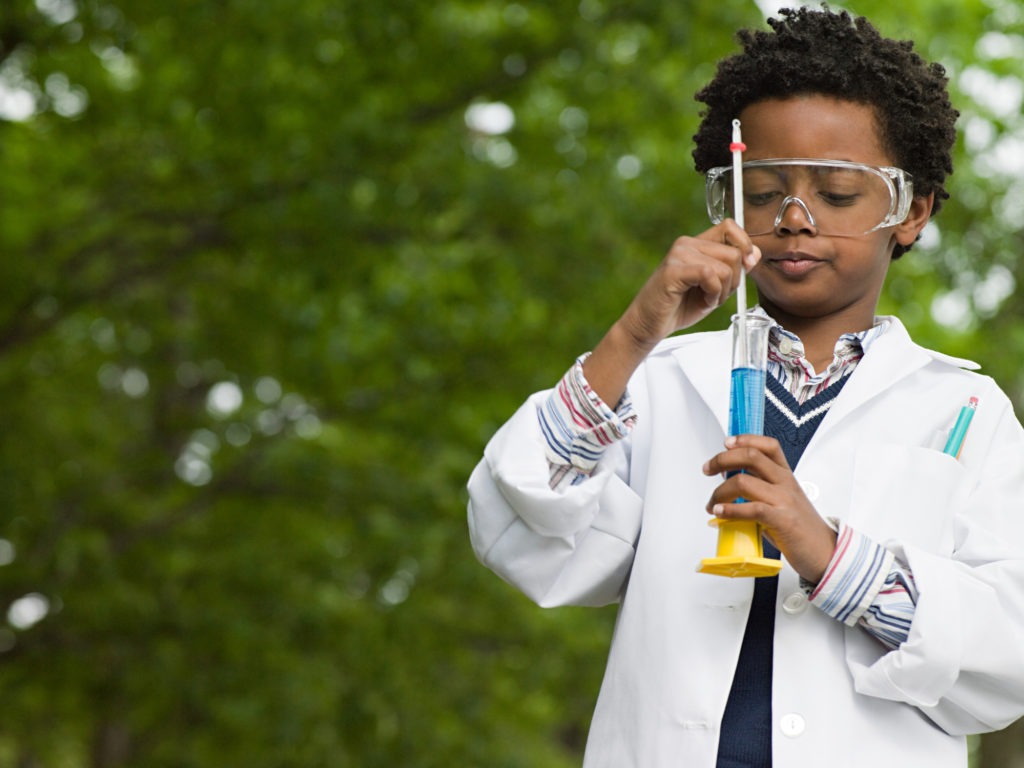
Parental Note: This experiment is geared towards ages 10 and up. The project will require adult support to gather materials, heat-up and pour hot water.
Additional Note: This experiment will take roughly 6 hours to complete.
Experiment Overview:
When the sun’s rays reach the Earth, some bounce off clouds back into space—the rays are reflected. While some energy is reflected, most of the solar energy from the sun is absorbed by Earth and turned into heat. This heat warms the Earth and the air around it—the atmosphere. Without the sun, it would be too cold for us to live here on Earth. The sun’s energy can be converted, or changed, to heat. People, animals, and plants can live on Earth because it is just the right temperature for life.
When we want to know how hot or cold it is outside, we use a thermometer. Digital thermometers use a sensor to read the temperature, but traditional thermometers are made of a glass tube that is sealed at both ends and partially filled with a liquid such as mercury or alcohol. The liquid inside is usually colored red so that it is easy to see.
As the temperature surrounding the glass bulb of the thermometer heats up, the liquid inside starts to expand. As the liquid expands, the volume of the liquid will increase and it will begin to rise up inside of the glass tube. As the environment around the glass bulb of the thermometer cools, the liquid will compress and start to go back down the tube. We typically use either alcohol or mercury inside of a thermometer because these liquids expand very fast in response to temperature changes, which allows for a quick and accurate measurement of temperature.
In this activity, you will make a homemade thermometer that you can use indoors and outdoors at home to measure temperature. You will test out the homemade thermometer by placing it in hot water. Then, you make a scale for your homemade thermometer by comparing it to a store-bought thermometer. Finally, you will use your homemade thermometer to observe what happens to the temperature of a container of water over time when you place it in different locations around your home.
Answer the following questions before starting the activity:
- What do you predict will happen to the red mixture when you place your homemade thermometer into hot water?
- What do you predict will happen to the temperature level when you place the container of water in the following locations?
- Under a shady tree: ___________________________________________
- On a dark surface in the sunlight: ________________________________
- On grass in the sunlight: _______________________________________
- Inside of a dark closet (indoors): ________________________________
- On a window sill: _____________________________________________
Experiment Materials:
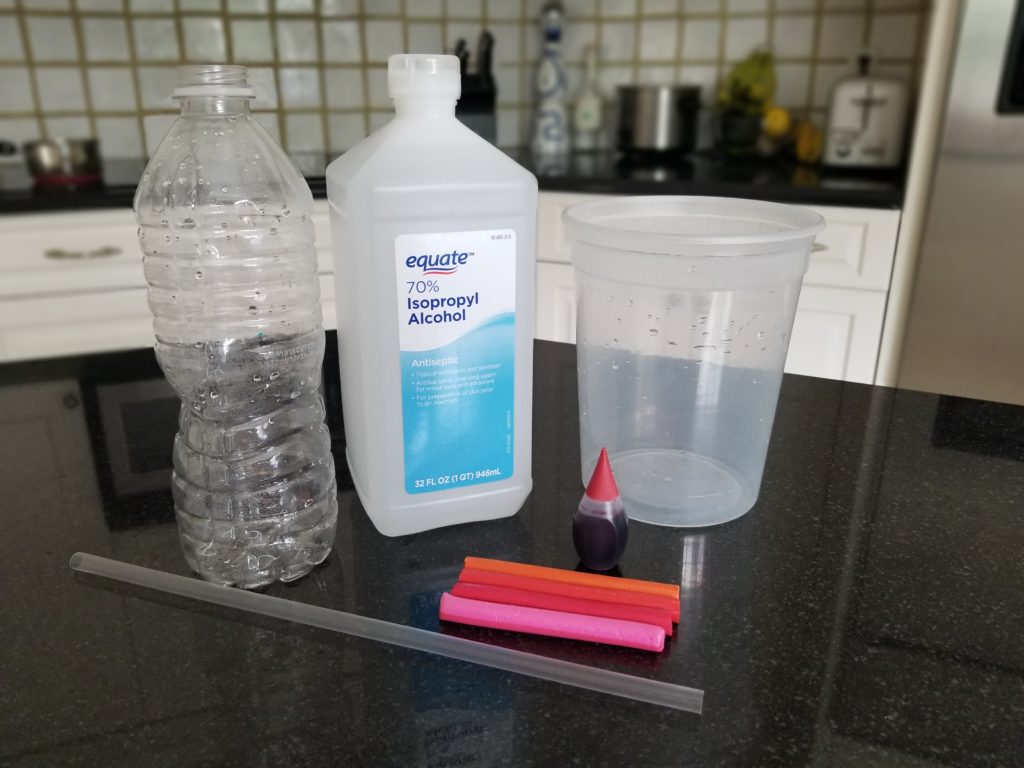
- 11 ounce narrow-neck clear plastic bottle
- Clear 1 liter container
- Measuring cup
- 1 clear plastic straw
- Red food coloring
- Rubbing alcohol
- 1 pack of modeling clay
- 1 store-bought thermometer
Experiment Process:
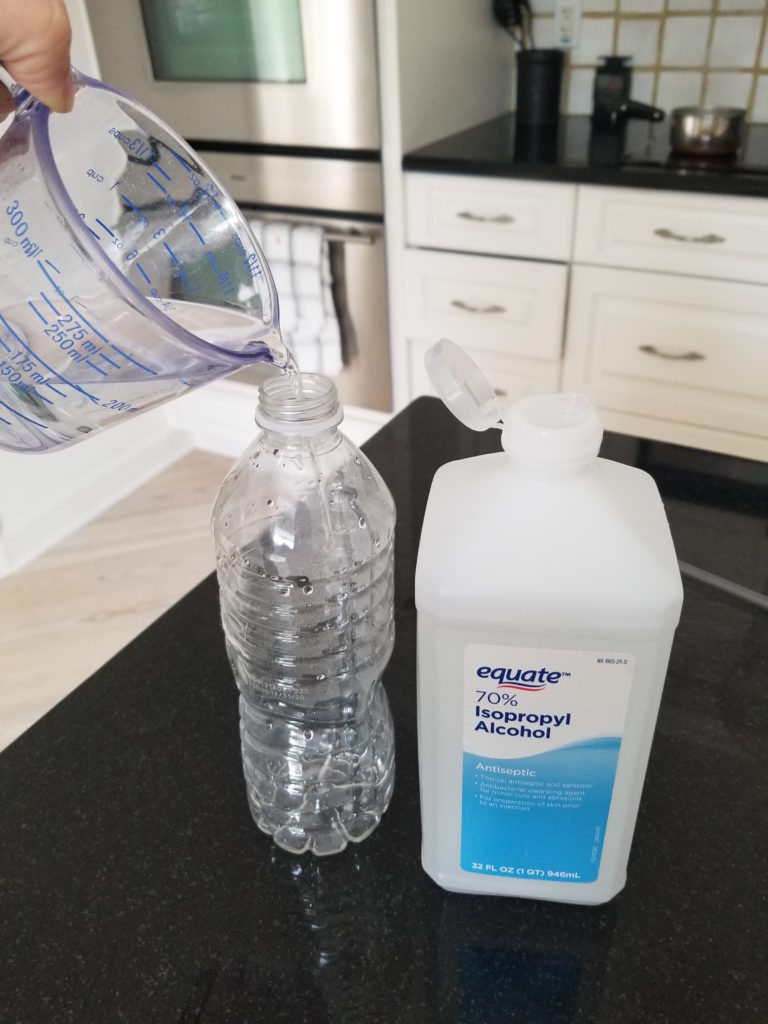
Step 1
Pour rubbing alcohol into the water bottle until it is about ¼ of the way full.
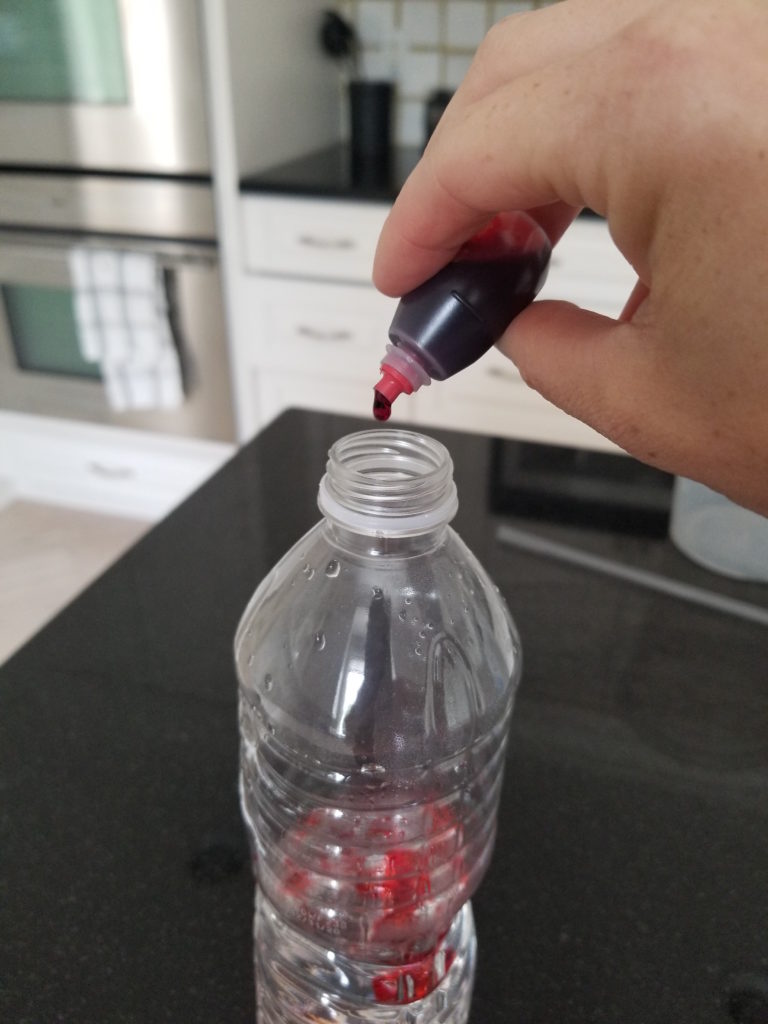
Step 2
Add a few drops of red food coloring and gently shake the bottle until the color is mixed evenly throughout the liquid.
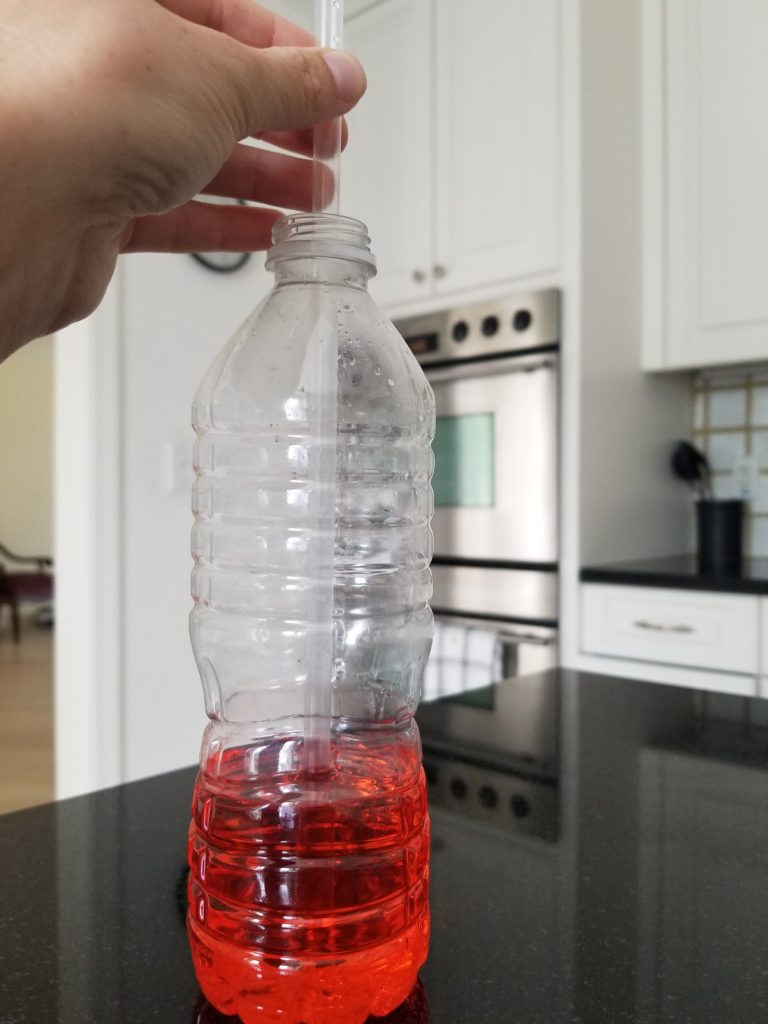
Step 3
Insert the straw into the water bottle, but do not allow the straw to touch the bottom of the water bottle.
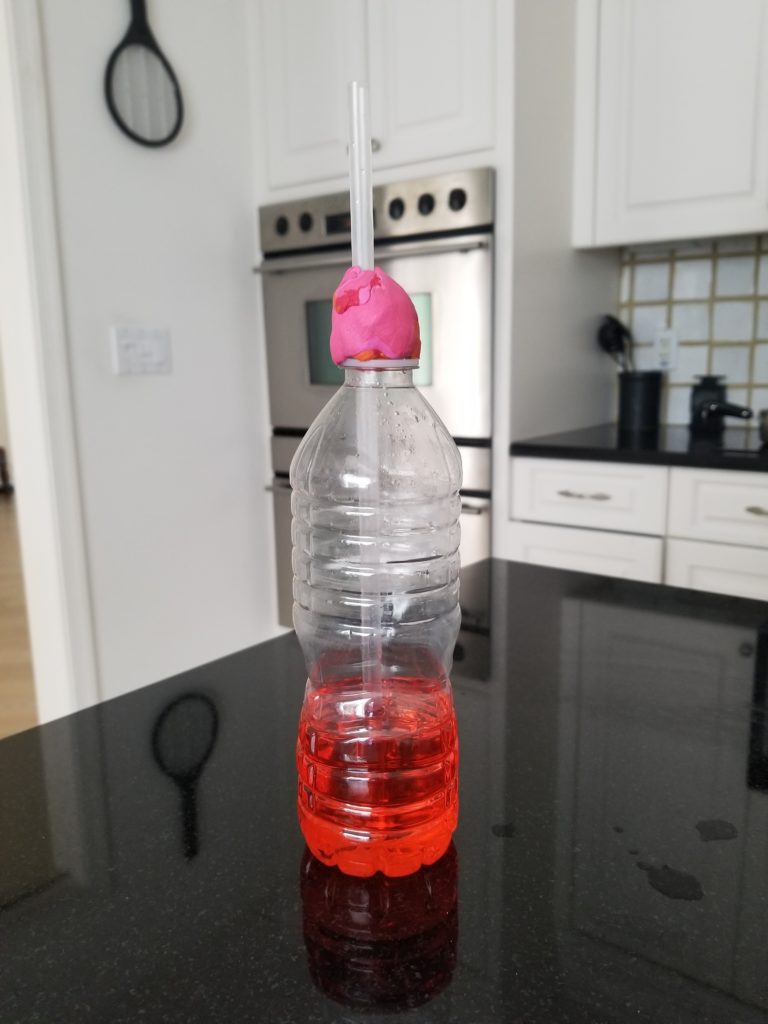
Step 4
Mold the clay around the straw in order to close the gap and hold the straw in place. The clay should be tight around the straw and cover the bottle mouth completely. The top part of the straw should extend out above the modeling clay. The channel through the center of the straw should remain clear so that the liquid can pass through the straw.
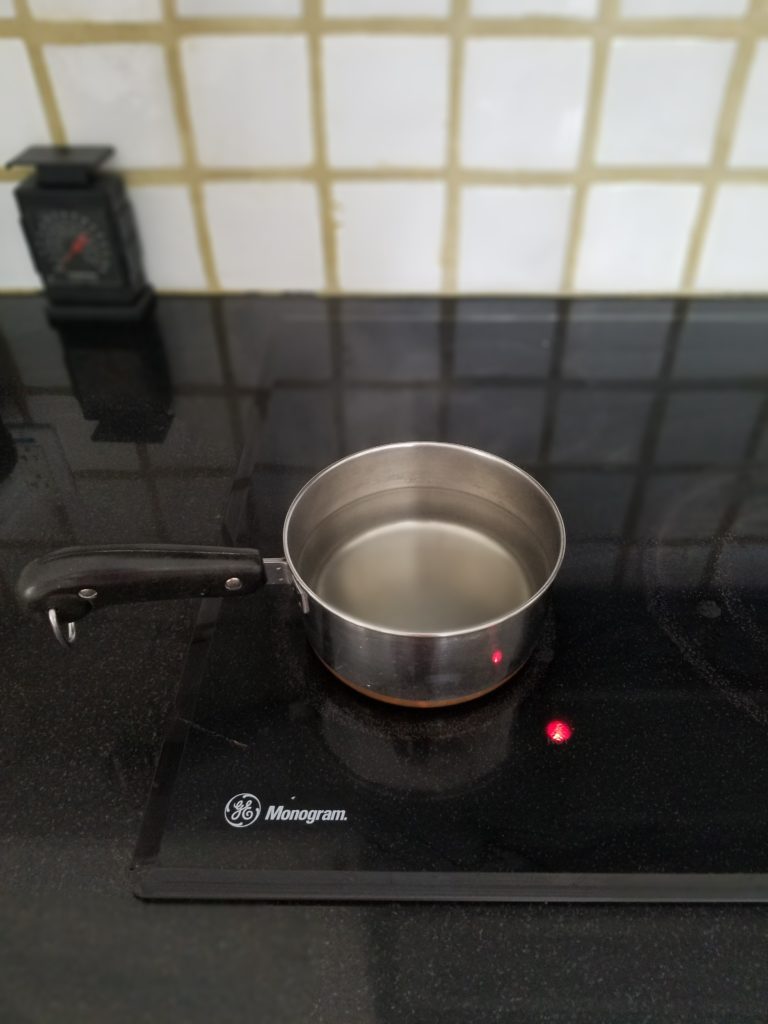
Step 5
You will need an adult to help with this step. Heat some water over the stove in a pot or teapot. Carefully pour the hot water into your clear 1-liter container.
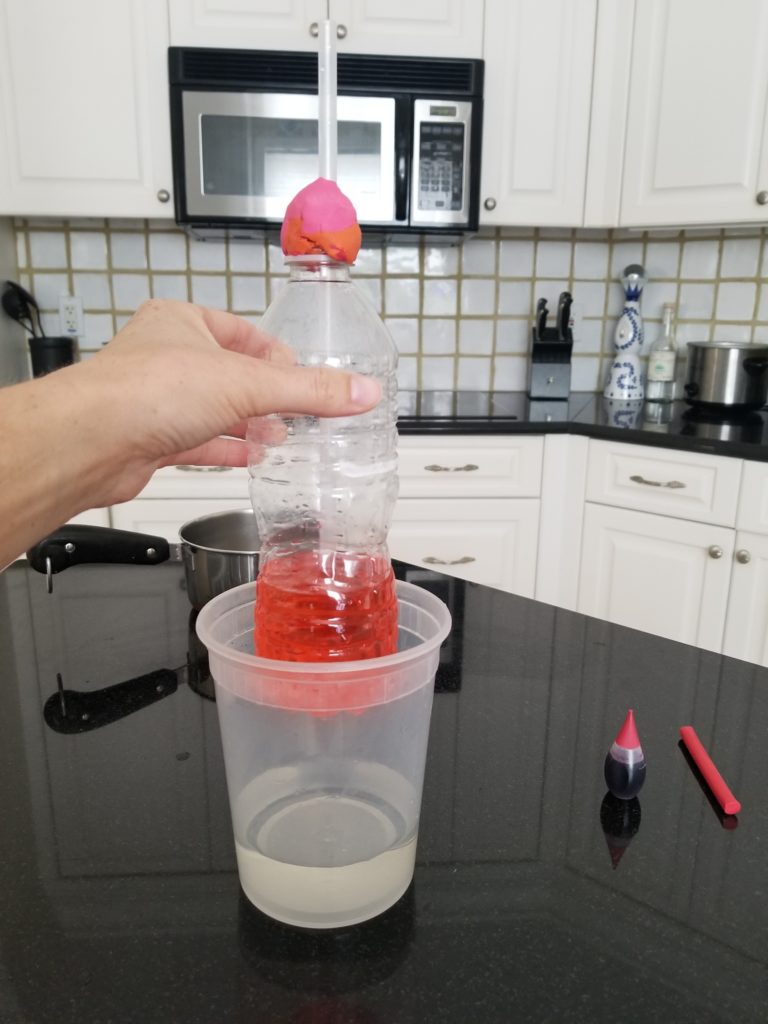
Step 6
Place your homemade thermometer into the hot water and watch what happens to the red mixture once immersed in the hot water.
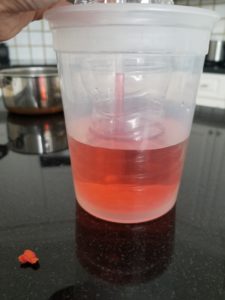
Note: If you do not see something happen within one minute, you may need to adjust your clay mold to ensure that no air is escaping from the mouth of the bottle. Also, check that the straw is positioned correctly.
Step 7
Make a scale for your thermometer. Alcohol expands by equal amounts for each gained degree in temperature. This relationship makes it easy to create a measurement scale for temperature. Now you will create s scale for your homemade thermometer by comparing it alongside a store-bought thermometer. You will use a store-bought thermometer to determine the temperature of 4-5 different temperature liquids.
Place both the store-bought thermometer and your homemade thermometer into the same liquid at the same time. Put a line on the straw where the red mixture rises up to on your homemade thermometer, and record the temperature (in degrees Fahrenheit or degrees Celcius) that the store-bought thermometer says the liquid is. Do this for four or five different temperature liquids to create a scale on your homemade thermometer. This process of comparing one instrument to another instrument with a known accuracy is called instrument calibration.
Step 8
Now you are ready to use your homemade thermometer to see observe how the amount of sunlight available at different locations inside and outside of your home can affect temperature. Place the thermometer in the following locations for 1 hour each and record the temperature in the chart below for comparison.
| Location | Temperature |
| Under a shady tree | |
| On a dark surface in the sunlight | |
| On grass in the sunlight |
Conclusions:
Some of the sun’s energy that reaches Earth is transformed from light to heat. The atmosphere traps the heat and keeps our planet warm. This is called the greenhouse effect. You observed this happening when you saw that water sitting out in the sun was warmer than water sitting out in the shade. This is because the sun provided energy that was transformed into heat. As the water heated up, the red mixture in your homemade thermometer began to rise up the straw.
Extension:
- Based on your observations, how can you tell that the light from the sun is a form of energy?
- What would Earth be like without the sun?









